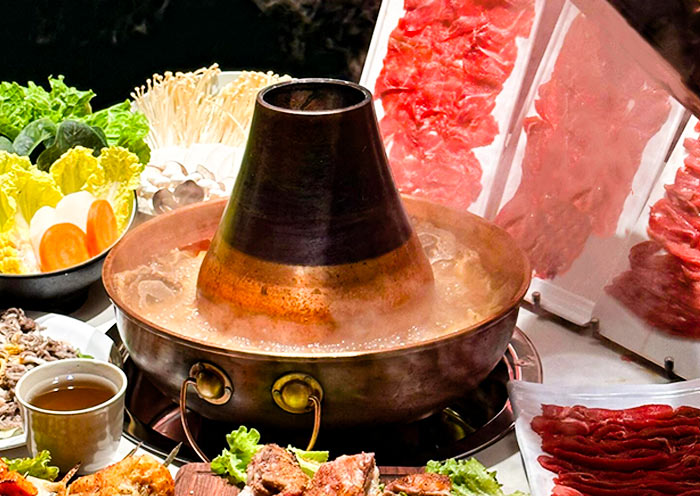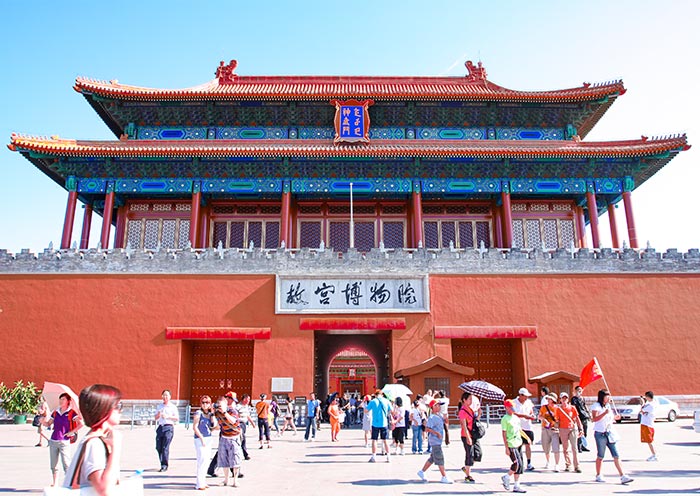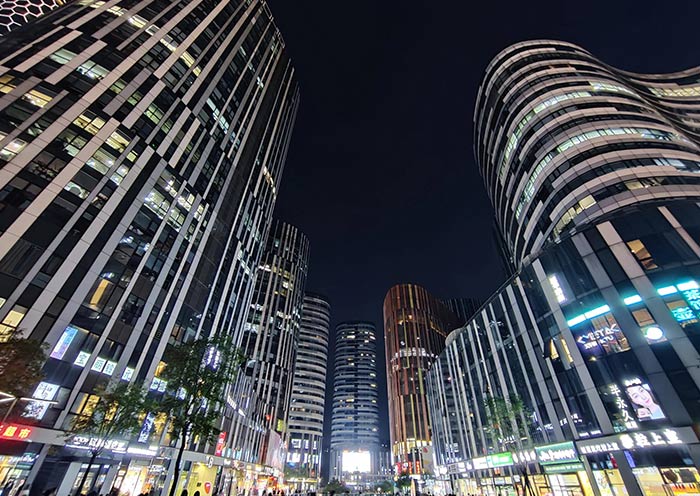What are Hutongs?


Hutongs are unique to Beijing and other northern Chinese cities, offering a deep dive into a long history and rich cultural background. These narrow streets, usually squeezed between courtyard residences known as "siheyuan," form the foundational layout of old Beijing. Today, there are over 1,000 hutongs in the city.
What's so Special about Hutongs?
Well, they're super narrow – some are only a few feet wide! And they're usually filled with these traditional courtyard houses called siheyuan. These houses are built around a central courtyard and have a really unique layout. From above, the hutongs look like a maze or a giant chessboard, with all these little lanes crisscrossing each other.
A Bit of History of Hutong
Hutongs have been around for over 700 years! They really took off during the Ming and Qing dynasties. Back then, almost everyone in Beijing lived in a hutong. Today, many hutongs have been turned into tourist spots, but you can still find plenty where people live their everyday lives.
Why are hutongs so popular?
It's all about the vibe. They offer a glimpse into traditional culture of China and a sense of community that's hard to find in big cities. Imagine hanging out with your neighbors in the courtyard, chatting and laughing. That's the kind of atmosphere you'll find in a hutong.
The Names are Cool too
Some hutongs are named after directions (like East Jiao Min Alley), others after famous people (like Shijia Hutong), and some even after the things people used to do there (like Hat Alley).
Where to Find Hutongs in Beijing?
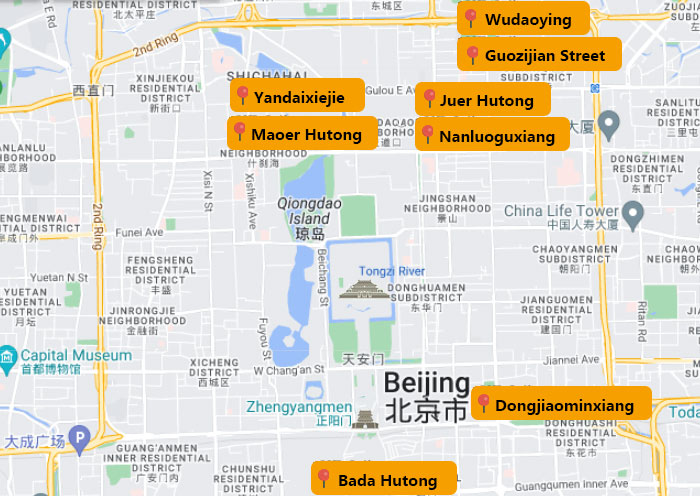
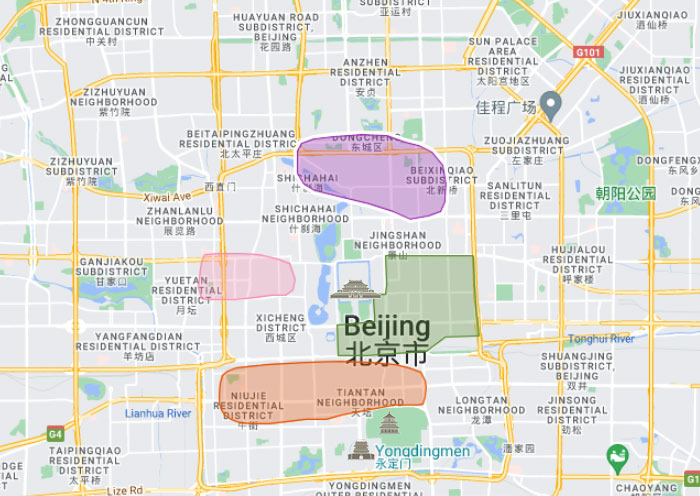
Beijing's hutongs are widely distributed, especially concentrated in the old city, commonly known as the "Second Ring Road" area. These areas have preserved a large number of traditional hutongs and courtyard houses, making them important places to experience the history and culture of Beijing.
Dongcheng District: Yonghegong Area
Located to the north of the Forbidden City, Dongcheng is often the first place people think of when hutongs come to mind. It is one of the most popular hutong destinations in Beijing. As you wander away from the main alleys, you'll find yourself in residential hutongs where life slows down, and everything feels more authentic.
Notable hutongs in this area include Nanluoguxiang, Guozijian Street, Mao'er Hutong, Yandai Xiejie, Juer Hutong, Wudaoying Hutong, and the Shichahai area.
Dashilar Area
Situated to the south of the Forbidden City, Dashilar is another hotspot for experiencing the hutongs in Beijing. This area is rich in history and bustling with local life. Key hutongs to explore here include Shi Jia Hutong, Zhu Jia Hutong, Dongnan Yuan Hutong, Xingsheng Hutong, Liulichang Cultural Street, Yanzi Hutong, Guantong Alley, and Jiuwan Hutong.
Fengsheng Area
To the west of the Forbidden City, the Fengsheng area was once among the wealthiest parts of Beijing and retains a touch of its former grandeur. Important hutongs here include Fengsheng Hutong, Xianming Hutong, and Lingjing Hutong.
Qianmen Street
On the east side of the Forbidden City, Qianmen Street was historically considered a privileged residential area and later utilized for embassies, customs houses, and foreign concessions. Noteworthy hutongs in this district include Dongjiaomin Alley, Jinyu Hutong, and Beiwazi Hutong.
Top 8 Hutongs in Beijing You Should Visit
Nanluoguxiang (南锣鼓巷) - One of Beijing's Oldest Hutongs


Nanluoguxiang is one of the oldest hutongs in Beijing, preserving a well-maintained layout from the Yuan Dynasty, with a history spanning over 740 years. The main street stretches 787 meters, flanked by eight smaller alleys, including the famous Juer Hutong and Mao'er Hutong. Many notable figures have resided here.
As one of Beijing's most popular hutongs, Nanluoguxiang is a haven for food lovers and the curious alike. Unlike large shopping malls, this area is filled with small shops offering a variety of souvenirs and traditional Chinese handicrafts. The array of Chinese and international restaurants satisfies many a food enthusiast.
Here, you can also experience authentic Beijing culture by taking a ride in a rickshaw, adding to the charm and historical richness of Nanluoguxiang.
Yandai Xiejie (烟袋斜街) - Hutongs Resembling Pipes


Yandai Xiejie, located near Shichahai and Houhai in the Xicheng District, is one of the oldest commercial streets of Beijing. Its name, which reflects its past as a center for manufacturing and selling smoking pipes during the Qing Dynasty, hints at its historical significance. The street is laid out in a northeast-southwest direction, mimicking the shape of a traditional smoking pipe.
One of the highlights of Yandai Xiejie is its preservation of the features typical of Beijing's civilian streets, such as shops with wooden structures, walls of grey bricks and tiles, and charmingly antique decorations. These elements provide a perfect backdrop for capturing captivating photos of old Beijing.
Wudaoying Hutong (五道营胡同)


From a quiet residential lane to Beijing's trendiest hangout, Wudaoying Hutong has come a long way. This narrow alleyway is now packed with charming cafes, stylish shops, and quirky art galleries. With its laid-back vibe, it's a magnet for both tourists and local hipsters. If you're looking for a taste of the vibrant culture of Beijing, don't miss Wudaoying.
Guozijian Street (国子监街): Experience the Historical Depth and Cultural Richness of Old Beijing
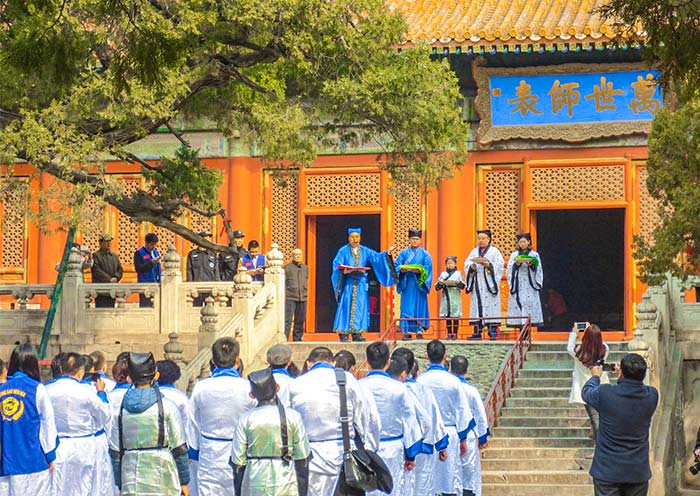
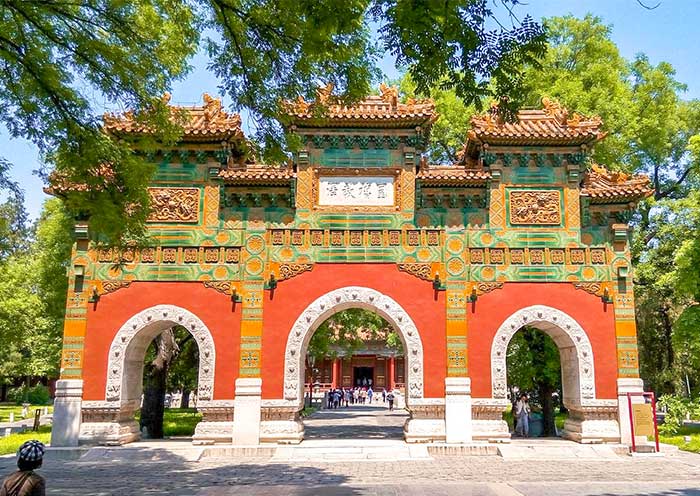
Guozijian Street, or Imperial College Street, this historic alleyway was once the site of the Imperial College, The first national university of China. Today, the street is lined with traditional courtyard houses, ancient temples, and cultural institutions.
Visitors can explore the Confucian Temple, the Imperial College, and the Wenchang Pavilion, which were all important centers of learning and education in ancient China. Guozijian Street offers a glimpse into the rich educational history and cultural heritage of Beijing.
Mao'er Hutong (帽儿胡同)
Mao'er Hutong, which literally means "Hat Alley," is a famous old street in Beijing that runs from Di'anmen Outer Street all the way to the Jiao Dao Kou area. It's a great place to check out if you're interested in history and traditional Chinese architecture.
The street is known for its well-preserved historic houses, including the former home of the last Empress of China, Wanrong (at numbers 35 and 37), and the mansion of the powerful warlord Feng Guozhang (at number 11).
Dongjiaominxiang (东交民巷): Once the Longest Hutong in Beijing
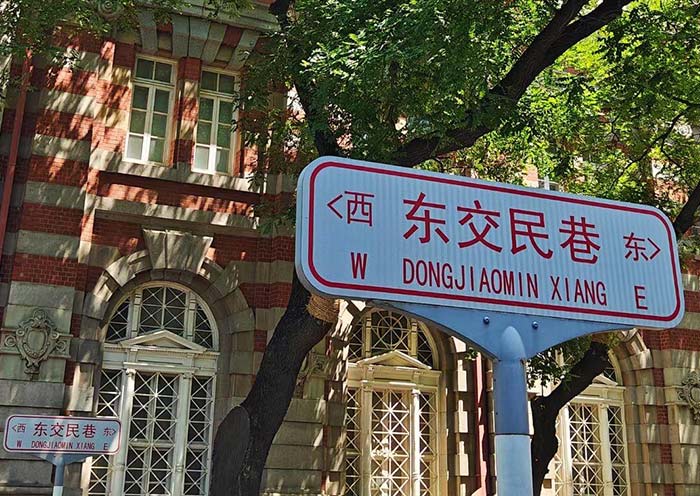

Dongjiaominxiang, once the longest hutong in Beijing, stretches over 1 kilometer and holds a unique place as the city's former diplomatic hub. Throughout the 20th century, this area symbolized the foreign presence in China's capital.
Today, while many of the embassies are gone, the street still has that old-world charm, with a mix of Western and Chinese architecture. It's a great place to learn about the history of Beijing and see how different cultures have influenced the city.
Ju'er Hutong (菊儿胡同)
Ju'er Hutong is famous for being the home of many important people in Chinese history. Ronglu, a powerful official during the Qing Dynasty who was favored by Empress Dowager Cixi, lived in houses number 3, 5, and 7.
What's really cool about Ju'er Hutong is its unique design. In the early 1990s, architect Wu Liangyong led a team to renovate the hutong, combining traditional courtyard houses with modern design. Their work was so impressive that it won a UN award for human settlements!
Batiao Hutong (八大胡同)
Bada Hutong, famously known as the historic heart of old Beijing, was once buzzing as the city's main "street of flowers and willows." This name doesn't point to just one specific alley but rather a bunch of them around the Dashilan area near Qianmen, famously packed with brothels back in the day.
Back during the Qing Dynasty, Bada Hutong was the go-to spot for entertainment and was known as a red-light district. It was where Beijing's courtesans, artists, and the city's elite would hang out, surrounded by teahouses, theaters, and, of course, brothels, making it a vibrant but somewhat notorious cultural hotspot.
These days, Bada Hutong has calmed down a lot, but popping over gives you a peek into the old nightlife of Beijing.
Best Ways to Explore Hutongs in Beijing


Walking
Walking through hutongs allows for an intimate, detailed view of the daily life and architecture of old Beijing. Nanluoguxiang and Ju'er Hutong are perfect for leisurely strolls. Nanluoguxiang, though sometimes crowded, is lined with shops and cafes housed in traditional structures, making it ideal for a casual walk. Meanwhile, Ju'er Hutong offers a quieter, more residential atmosphere, allowing for a peek into the lives of locals.
Rickshaw Rides
For a touch of tradition, hop onto a rickshaw. This old-fashioned mode of transport lets you relax and take in the sights without the exertion. Rickshaw drivers often double as informal guides, providing insights into the history and culture of the hutongs you pass through. It's a charming way to cover more ground without missing the intimate details that make each hutong unique.
Cycling
Biking through hutongs like Wudaoying Hutong offers flexibility to stop and explore whenever something catches your eye. Wudaoying is trendy with plenty of stops for food and drink, making it an enjoyable place for cycling without the rush.
Visiting Local Hutong Families
For a deeper connection, consider arranging a visit to a local family living in a hutong. That allow you to see the inside of a traditional siheyuan (courtyard house) and experience the everyday life of Beijingers. It's an intimate peek into the culture and traditions that define these historic neighborhoods.
Living in a Hutong in Beijing

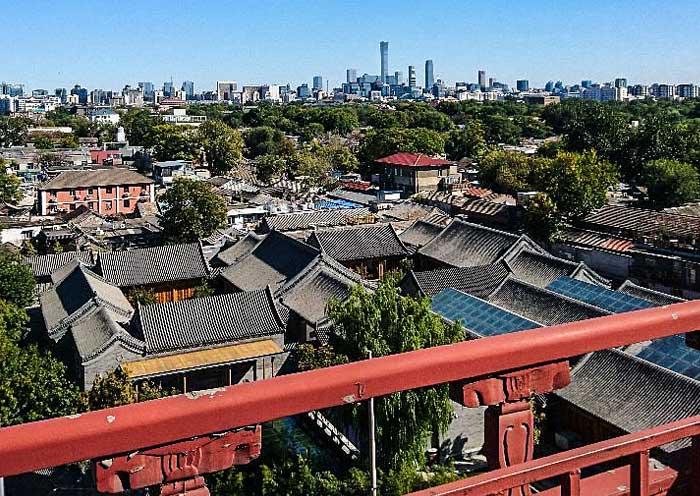
Staying in a hutong in Beijing is an experience like no other, offering a unique slice of life in China's bustling capital.
You can book your stay in a traditional siheyuan, which is a historic courtyard home converted into guesthouses or boutique hotels. These accommodations often retain their original architectural features, such as decorative tiles and wooden carvings, while providing modern comforts.
Websites like Airbnb or local Chinese platforms often list such properties. Places like the Orchid Hotel in Baochao Hutong or the Double Happiness Courtyard Hotel in Dongsi Hutong come highly recommended for their authenticity and excellent service.
When choosing a hutong, consider its location and the amenities available. Some hutongs are more commercialized and touristy, like Nanluoguxiang, while others offer a quieter, more residential atmosphere, such as those in the Shichahai area.
How to Plan a Beijing Hutong Tour (Itinerary)


Planning a tour of Beijing's hutongs can be a delightful and enriching part of your itinerary, allowing you to experience the city's historic charm amidst its rapid modernization. Here's how you can incorporate a visit to the hutongs into a well-rounded 5-day Beijing trip:
Day 1: Arrival in Beijing
Day 2: Beijing City Tour. Dive into the rich history of Beijing with a visit to Tian'anmen Square and the magnificent Forbidden City. In the afternoon, explore the vast and beautiful Summer Palace, enjoying its peaceful landscapes and grand architecture.
Day 3: Great Wall Adventure. No visit to Beijing is complete without seeing the Great Wall. The Mutianyu section offers a less crowded experience with stunning views. On your way back to the city, stop by the Olympic Park to see the iconic Bird's Nest and Water Cube.
Day 4: Beijing Hutongs Tour. Through the Lama Temple and the Guozijian Street, offering a deep dive into ancient Chinese education. Experience local life firsthand with a hutong family visit, savor traditional Beijing cuisine, and enjoy a rickshaw tour around the scenic Shichahai area.
Day 5: Beijing Departure
Travel to Beijing With Asia Odyssey Travel (AOT)
Experience the best of Beijing with Asia Odyssey Travel (AOT). As local experts, we've been crafting unforgettable journeys through the city for years. From the Forbidden City's grandeur to the hutongs' vibrant energy, we'll create a personalized itinerary that captures your interests.
Explore Beijing like a local with our comprehensive travel guide:
Beijing Hutongs, How to Visit Forbidden City
Beijing at Night, Beijing Food
Where to Stay in Beijing, How to Plan a Trip to Beijing
Useful Guide for Great Wall of China:
How to Get to the Great Wall of China, Great Wall of China Facts
Mutianyu Great Wall, Jinshanling Great Wall, Simatai Great Wall, Jiankou Great Wall
Most Popular Beijing Tour Packages:
Beijing Tours, Beijing Day Tours, Beijing Group Tours, Beijing Private Tours
Beijing Great Wall Tours, China Great Wall Tours, Beijing Layover Tours
Let Asia Odyssey Tours be your guide to Beijing. Contact us today to start planning your dream vacation.
